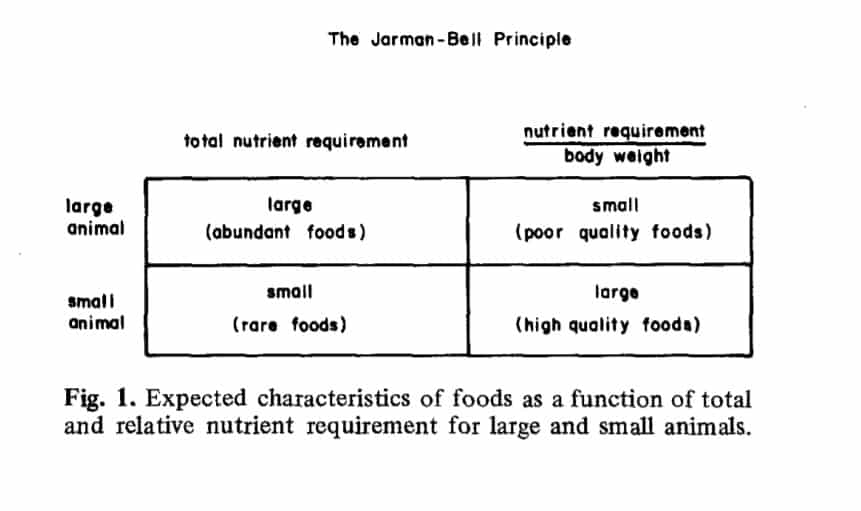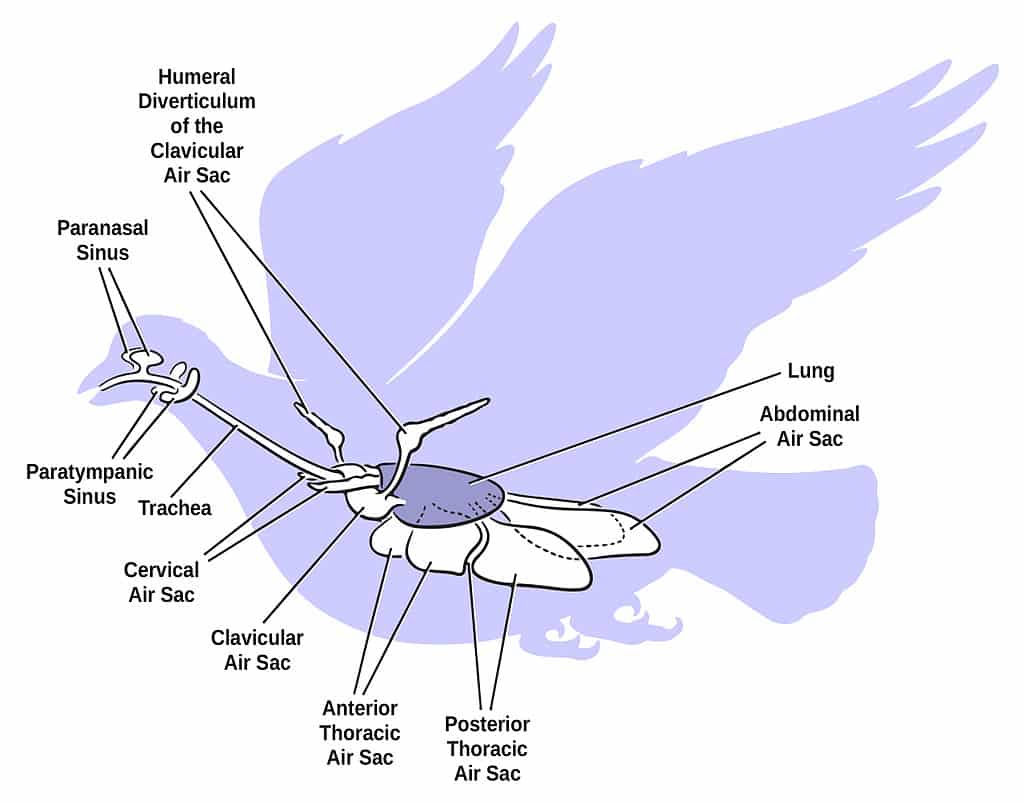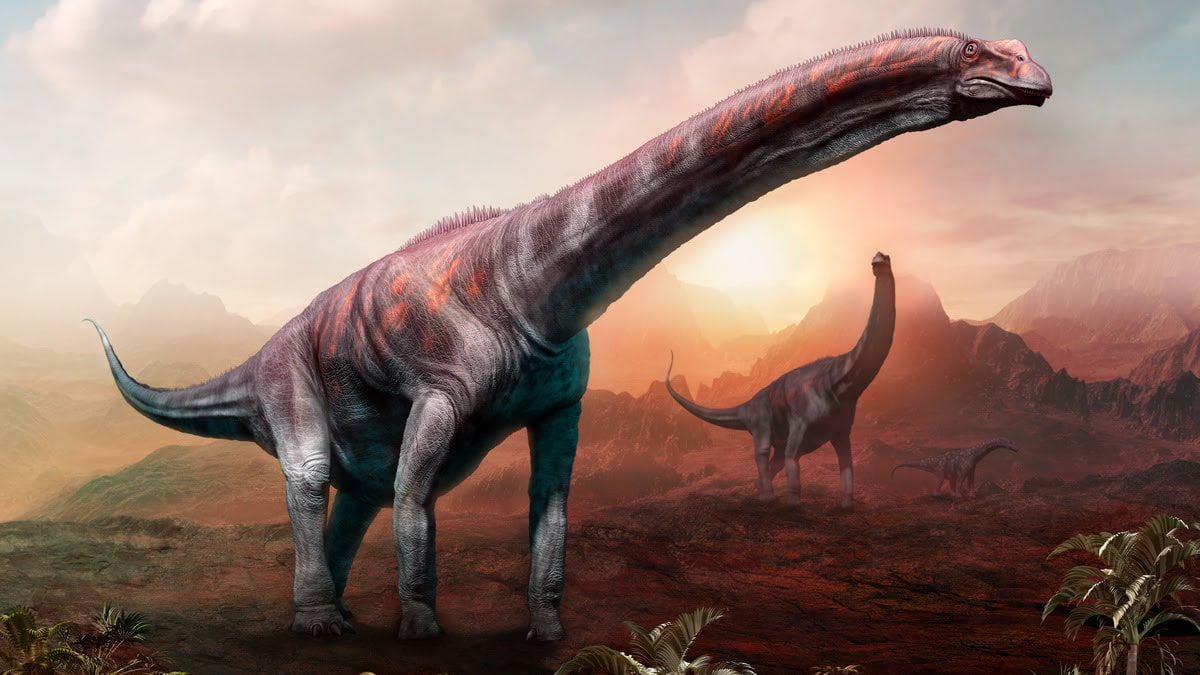Why were prehistoric animals so large? Tyrannosaurus Rex, Brachiosaurus, Triceratops, and many other prehistoric animals were massive! The largest living land animal, the African elephant is barely comparable to Triceratops in size and about a quarter of the size of many sauropods (the long-necked dinosaurs).
Compared to animals like Brachiosaurus, it’s no wonder that many ask why prehistoric animals grew so large. So why and how did they get that big? Some scientific theories propose rules to explain the phenomenon of large animals.
The honest answer is that we don’t fully understand how or why some dinosaurs grew so large. Some comprised the largest land animals in history. Yet, most dinosaurs didn’t grow very large even in comparison to living species.
Paleontologists can learn a great deal about dinosaurs and other prehistoric animals, but since all of the non-avian dinosaurs (dinosaurs that aren’t birds) are extinct, we cannot directly research them. So paleontologists have to study their descendants and other similar animals to develop hypotheses.
In another article, I covered the topic of why paleontology is important and highlighted the incorporation of other sciences. These relationships will become clearer as you read on.
Theories About Enormous Prehistoric Animals
Cope’s Rule
Cope’s rule, named after famed paleontologist Edward Drinker Cope, states that animals tend to increase in size across generations. That is to say that over time, each new generation of an animal species is a bit bigger than the last. Over millions of years, very small changes in size add up. This article on allthescience.org explains this principle well.
As an example, some of the first dinosaurs, such as Eoraptor, barely weighed 20 pounds (9 kilograms); some of the last dinosaurs (about 160 million years later), such as Tyrannosaurus, could have weighed as much as 15 tons (14 metric tons). This rule also stands with many other animals, such as horses and whales.
The reasons why this rule tends to hold vary, but they usually relate to evolutionary fitness. This is different from the kind of fitness you get from the gym.
Evolutionary fitness relates to how likely an animal is to produce offspring thanks to its particular set of evolutionary advantages. Often, being large offers a huge advantage in winning mates.

One aspect of large size is an advantage, and a key part of Cope’s rule is predator-prey relationships.
It is inherently easier for predators to prey on animals that are smaller than themselves. As such, it is often advantageous for both predator and prey animals to evolve larger sizes. If a predator and prey species are allowed to compete for a long period of time, each attempting to gain size over the other, then incredibly large sizes become more possible.
Unfortunately, Cope’s rule doesn’t apply to many animal groups. Furthermore, itt doesn’t provide specifics for how animals can grow large.
Cope’s rule isn’t a law of nature, it’s just a general rule, and it has flaws. Saying that it is usually beneficial to be big doesn’t explain how animals get to those sizes, or why more modern animals aren’t those sizes.
To better answer the question of why and how dinosaurs and other prehistoric animals were able to grow so large, we have to look more closely at evolutionary fitness and how size can impact different animals
Bergmann’s Rule
Bergmann’s rule also attempts to answer the question of why some animals grow so large, but only a small part of that question. Bergmann’s rule states that species, and populations of species, tend to be larger in colder environments. The reason is quite simple: bigger animals lose body heat more slowly.

This is expressed in terms of these animals having a low surface area to volume ratio. Check out this entry from Britannica for more on Bergmann’s rule.
An easy way to understand this is by looking at modern bears. Even though the American black bear can be less than half the size of a polar bear, a polar bear doesn’t have twice as much skin. Even though the polar bear is bigger and weighs more than a black bear, it doesn’t have a proportionally greater amount of skin.
Many animals from the Pleistocene (the geologic time period of the most recent Ice Age) closely resemble larger versions of animals that we are familiar with today. There are so many large animals from the Pleistocene that the term Pleistocene megafauna (meaning large animals) is often used to describe them. Some examples are the American and cave lions, dire wolves, short-faced cave bears, cave hyenas, terror birds, the Irish elk, and wooly rhinos.
Bergmann’s rule doesn’t do much to explain the large size of many dinosaurs, as most of the well-known large dinosaurs, such as Triceratops, lived in warm environments. Further, Bergmann’s rule does little to explain the size of these Ice Age animals. There are a few rules and principles that more directly address why some dinosaurs grew to such large sizes.
Jarman-Bell Principle
The Jarman-Bell principle states that larger animals can make better use of low-quality foods than smaller animals. Here, low-quality food refers to food that takes more effort to extract nutrients from or has a relatively small amount of nutrition. Science Direct has an interesting article on the Jarman-Bell principle.
A classic example of low-quality food is grass. Grasses are plentiful but must be broken down before they can provide valuable nutrition. Cows, for example, have to regurgitate grass and rechew it before they can finish extracting nutrients from it.

The reason why larger animals can make better use of low-quality food is that they have bigger guts. Many animals that eat low-quality foods, such as cows, make use of a fermentation process in the stomach or large intestine. Fermentation uses gut bacteria to partially digest food.
Since cows have bacteria in their stomachs that assist stomach acid by breaking down the fibers in the grass, cows can let grass hang out in their stomach and ferment to extract nutrients.
The bacteria cannot ferment grass instantly though, it takes time. Because animals like cows cannot instantly get nutrition from low-quality foods like grass, it is beneficial to them to eat a large amount of this food and let it sit in an equally large stomach to ferment.
This idea of animals who eat low-quality foods requiring a large amount of food that ferments is one major theory of why some herbivorous dinosaurs might have grown to such gigantic sizes.
Sauropods such as Brachiosaurus grew so large that adults were not threatened by even the largest predatory dinosaurs. They lived in warm environments, so predator-prey relationships and Bergmann’s rule didn’t apply to them. They did, however, eat very low-quality food.
Brachiosaurus, for example, fed on the leaves of conifers (such as pine trees) and cycads (plants that are similar to, but unrelated to, palm trees). These leaves are tough and woody, and hard to extract nutrients from.
For Brachiosaurus to survive on things like pine needles, they needed to eat a large amount of them and let them ferment for a long time. Smaller animals wouldn’t be able to eat enough of this kind of low-quality food at one time to survive.
An important thing to note is that Brachiosaurus barely chewed its food. Chewing food extensively makes it easier to extract nutrients.
Food like cycads are still tough enough that they have to be fermented, but extensive chewing, like that done by Triceratops, means that stomachs don’t have to ferment for as long. Therefore, these dinosaurs did not need as large of a body.
This helps to explain why even though Triceratops and Brachiosaurus ate the same general types of food, they had drastically different sizes. While the Jarman-Bell principle helps to explain why sauropods like Brachiosaurus grew so large, it doesn’t explain how they were able to be so large.
Body Mechanics for Gigantic Dinosaurs
Air Sacs
Dinosaurs like Triceratops and Tyrannosaurus were larger than any living land animal, but they were still comparable in size to the largest land mammals. Examples included the ancient elephant Palaeoloxodon and the ancient, hornless, long-legged rhino Paraceratherium, which each weighed as much as 22 tons (20 metric tons).
The largest sauropod dinosaurs, such as the South American sauropod Argentinosaurus, weighed as much as five times more than Triceratops or Palaeoloxodon. To achieve such a huge size must have required incredible adaptations.

Paleontologists are still actively studying how animals such as Argentinosaurus could have become so large within the limitations of physical anatomy. One thing that paleontologists have uncovered that certainly could have helped these animals become so large is the presence of air sacs in the bones.
You may have heard how birds have “hollow” bones. While it is true that birds have some empty space in their bones, their bones aren’t hollow; those empty spaces are actually air sacs that are part of the bird’s respiratory system.
Sauropod dinosaurs had these same types of air sacs in their bones, and they served a dual purpose: air sacs in the bones make the bones lighter, and therefore easier to hold up, and air sacs aid in an advanced form of respiration.
Birds and sauropods, thanks to their air sacs, are able to keep air moving in a single direction while breathing, this allows them to absorb more oxygen and expel more carbon dioxide with each breath. This special type of breathing may have been incredibly important in making sure that sauropods could gather enough oxygen to supply the needs of their massive bodies.
What About Gigantism in Other Animals?
We’ve discussed how and why dinosaurs and ancient mammals were so large, but what about other animals? Tyrannosaurus and Palaeoloxodon weren’t the only giant prehistoric animals after all.
Giant Bugs
During the Carboniferous Period (roughly 350 to 300 million years ago) giant arthropods were roaming the the earth. The term giant is no exaggeration.
Some arthropods, such as the millipede like Arthropleura reached sizes as great as 8 feet long (2 meters). The largest flying insect of all time, the dragonfly-like Meganeura had a wingspan of 2 feet (60 centimeters).
We don’t have bugs this size today, and there’s a good reason for this. During the Carboniferous Period, there was more oxygen in the air.
Arthropods have a very simple respiratory system. When oxygen levels decreased at the end of the Carboniferous, they could no longer get enough oxygen from the air to remain so large. Oxygen levels decreased due to an extinction event called the Carboniferous Rainforest Collapse.
Plants are a major source of oxygen, so when the massive rainforests of that time collapsed, the global oxygen level dropped. Due to a variety of environmental and ecological conditions, those kinds of rainforests have never occurred since. Thus, the oxygen levels have never reached the same highs and we haven’t seen giant bugs ever since.
Giant Amphibians
Living alongside the giant bugs of the Carboniferous (and later periods) were giant amphibians. The largest of them, Prionosuchus, was as large as 30 feet long (9 meters) and 2 tons (2 metric tons). This is larger than the biggest modern reptile, the saltwater crocodile.
Today, the largest amphibian, the critically endangered South China giant salamander, reaches lengths of only about 6 feet (2 meters). Amphibians have proper lungs, so they didn’t require the extra oxygen in the air to become huge like the Carboniferous insects. But what they do require are warm, wet environments.
After the Carboniferous Rainforest Collapse, the world only became colder and dryer and amphibians couldn’t compete with reptiles that were better adapted for dry environments.
Extinction and Evolution
For everything else, like the giant snake Titanoboa, giant ground sloth Megatherium, and giant shark Carcharocles megalodon, the reason why they were able to grow so large, and why there aren’t any as large living members is extinction and evolution.

Cope’s rule states that species tend to grow larger over evolutionary time. As we know, evolution often takes a long time. Cope’s rule also misses one important disadvantage of large size.
Large animals tend to be more strongly affected by mass extinction events. Being large tends to mean that you cannot quickly adapt to changes in your environment, so you are more susceptible to quick changes, such as those caused by an extinction event.
When you take these two pieces of information together, it means that once a large animal goes extinct, it takes a very long time for new large species to evolve and take their place. It’s also very important to consider that we just finished a mass extinction at the end of the Pleistocene, the last Ice Age.
In geologic terms, some of the biggest mammals to have ever walked the earth, and the biggest version of mammals that we are familiar with today, died out practically yesterday. It will take a very long time for new mammalian giants to evolve.
Additionally, humans have a bad habit of killing off large animals. Many of the large mammals from Africa are endangered from human hunting and humans have already killed off many large animals, such as New Zealand’s 500-pound Moa birds.
Why Were Prehistoric Animals Different?
With all of that said, we shouldn’t forget that we currently live alongside some startlingly large animals. The whale shark may be bigger than the infamous C. megalodon and the blue whale is the largest animal known to have ever existed.
To think that animals only used to be big is not giving whales enough credit. The blue whale weighs nearly twice what Argentinosaurus might have and is nearly as long without having the same extended neck.
The earliest whale ancestor, Pakicetus, lived 50 million years ago. It was only about 6 feet (2 meters) long. Whales have had to evolve for a tremendous amount of time and survive several geologic epochs to reach the massive size of today’s blue whale.
Finally, it’s important to remember that for every large animal in a group, there are small members too. Tyrannosaurus might have been huge and scary, but the age of dinosaurs was full of small dinosaurs. One of the smallest, Microraptor barely weighed 2 pounds.
Movies such as Jurassic Park tend to show Velociraptor as large and intimidating. The real Velociraptor was closer in size to a turkey, not “a 6-foot turkey” as stated in the movie. We have an in-depth article on Jurassic Park dinosaurs that explores this further.
It is far more accurate to say that most dinosaurs were small. Some, like the sauropods, became huge, but for every species of gigantic dinosaur, there were likely dozens of medium-sized to downright tiny dinosaur species.
Why Were Prehistoric Animals So Large Compared to Modern Ones?
Natural selection has favored smaller plants and animals following recent extinctions. Only in the oceans have truly gigantic animals continued to grow to the tremendous sizes reflected in the fossil record.
Ocean ecosystems present opportunities for whales to maintain large body masses, but this could change. As climate change continues to alter the course of many ecosystems, larger species may once again become lost.
We as individuals will never see the monstrous insects of the past. If, however, the global climate continues to shift rapidly, new life forms may take advantage of these changes to fill new niches.
In time, we can have large terrestrial life forms grow to the size of the dinosaurs. If we are lucky, humans may survive long enough to witness these beasts.
Did you learn something new about these giants of the past? Leave us a comment to let us know what aspect was most interesting. Please consider sharing this article if you found it useful.


Thanks for this very comprehensive article! I am relieved to know that giant insects are a thing of the past!
Thanks for reading!
And yes, they would certainly ruin a picnic.